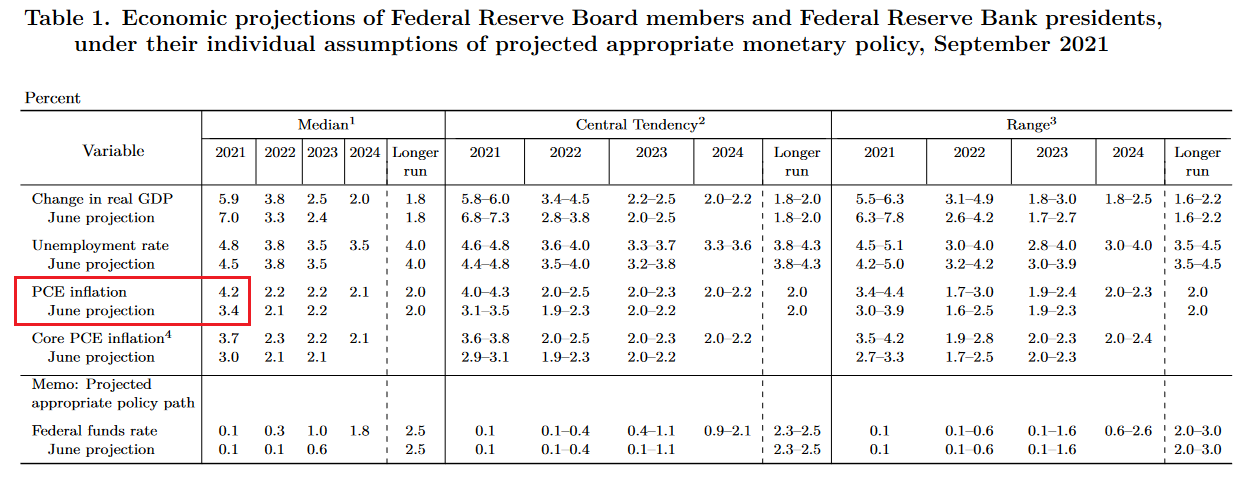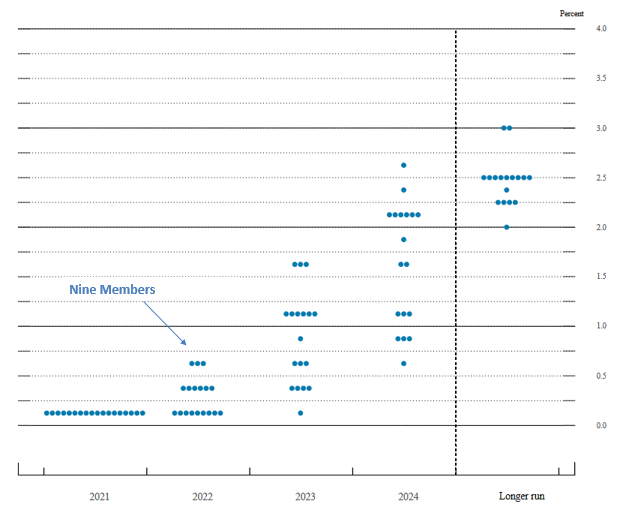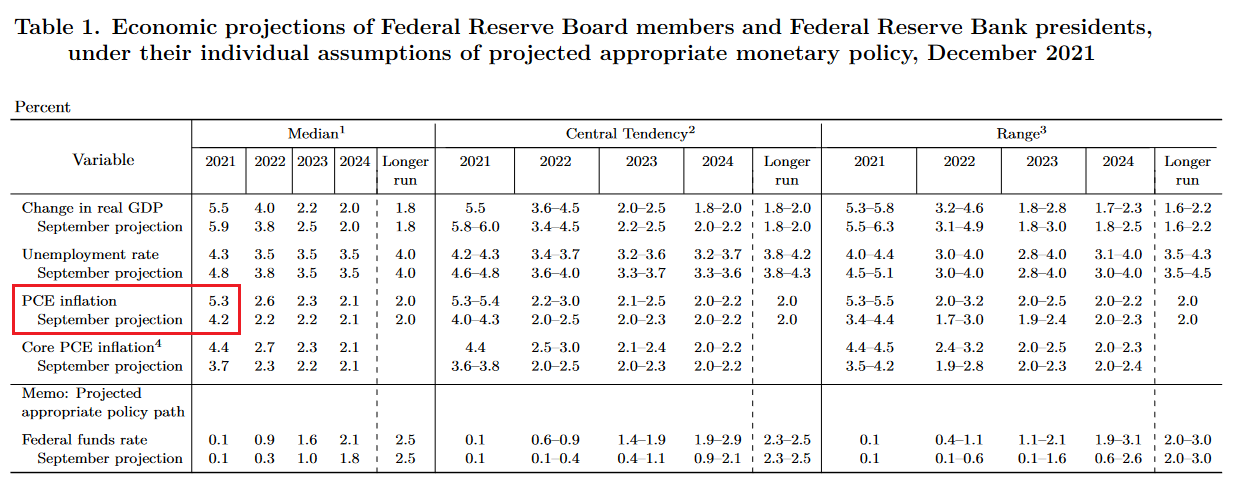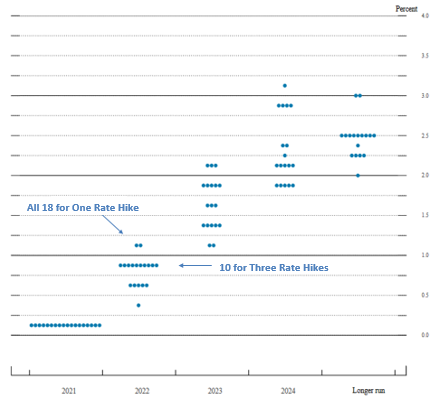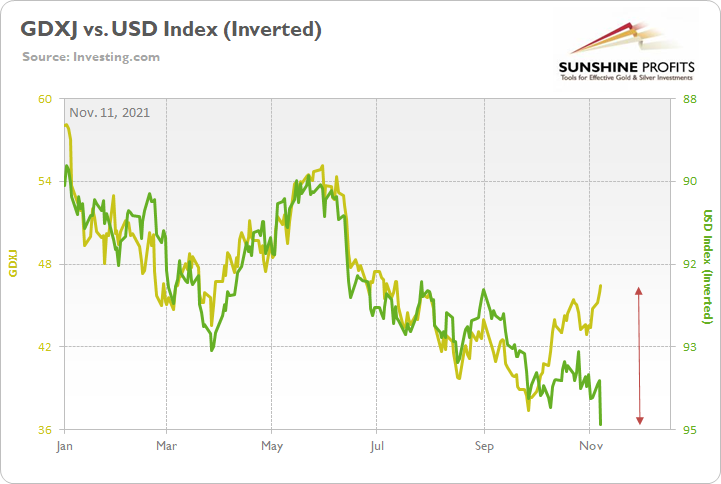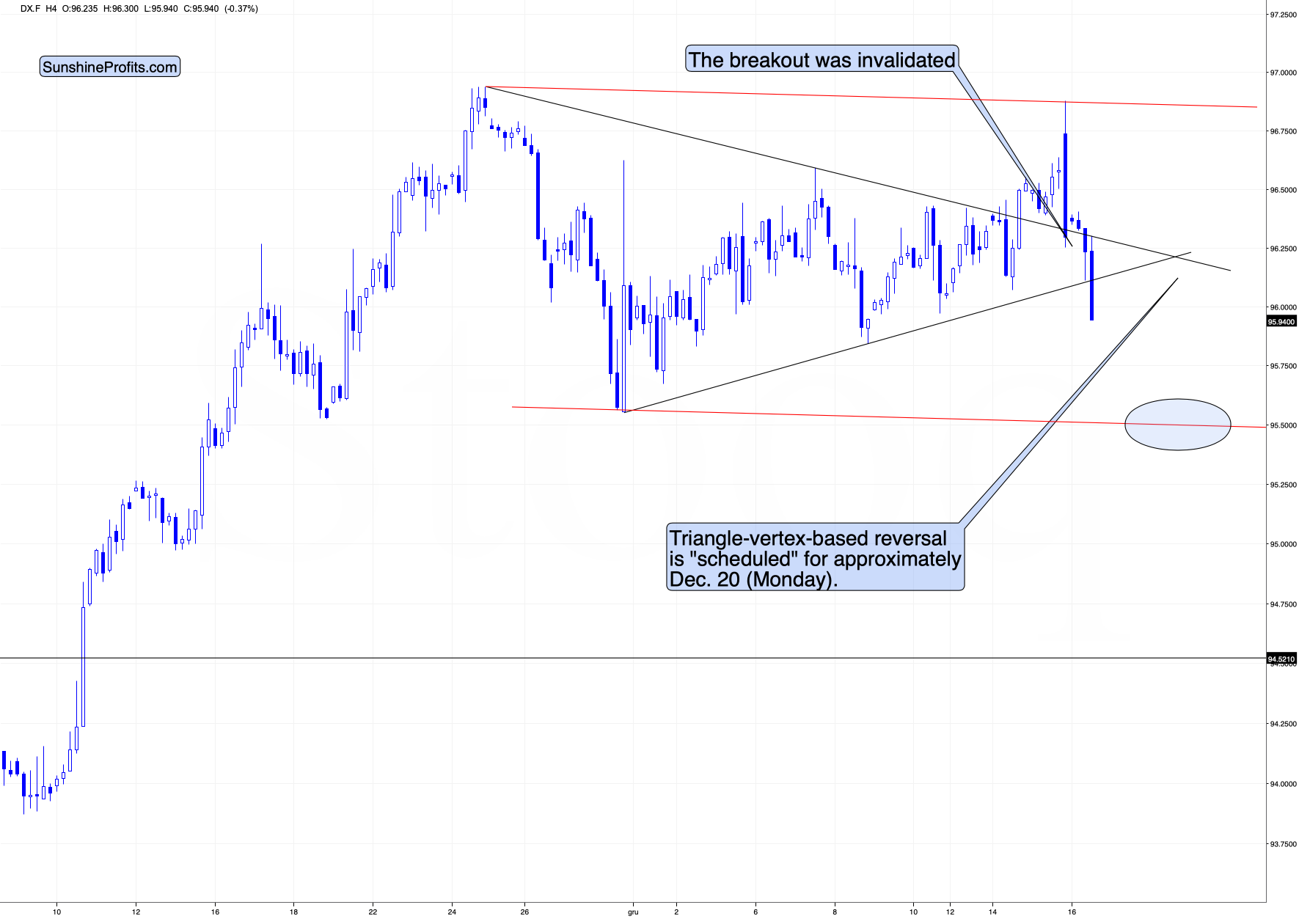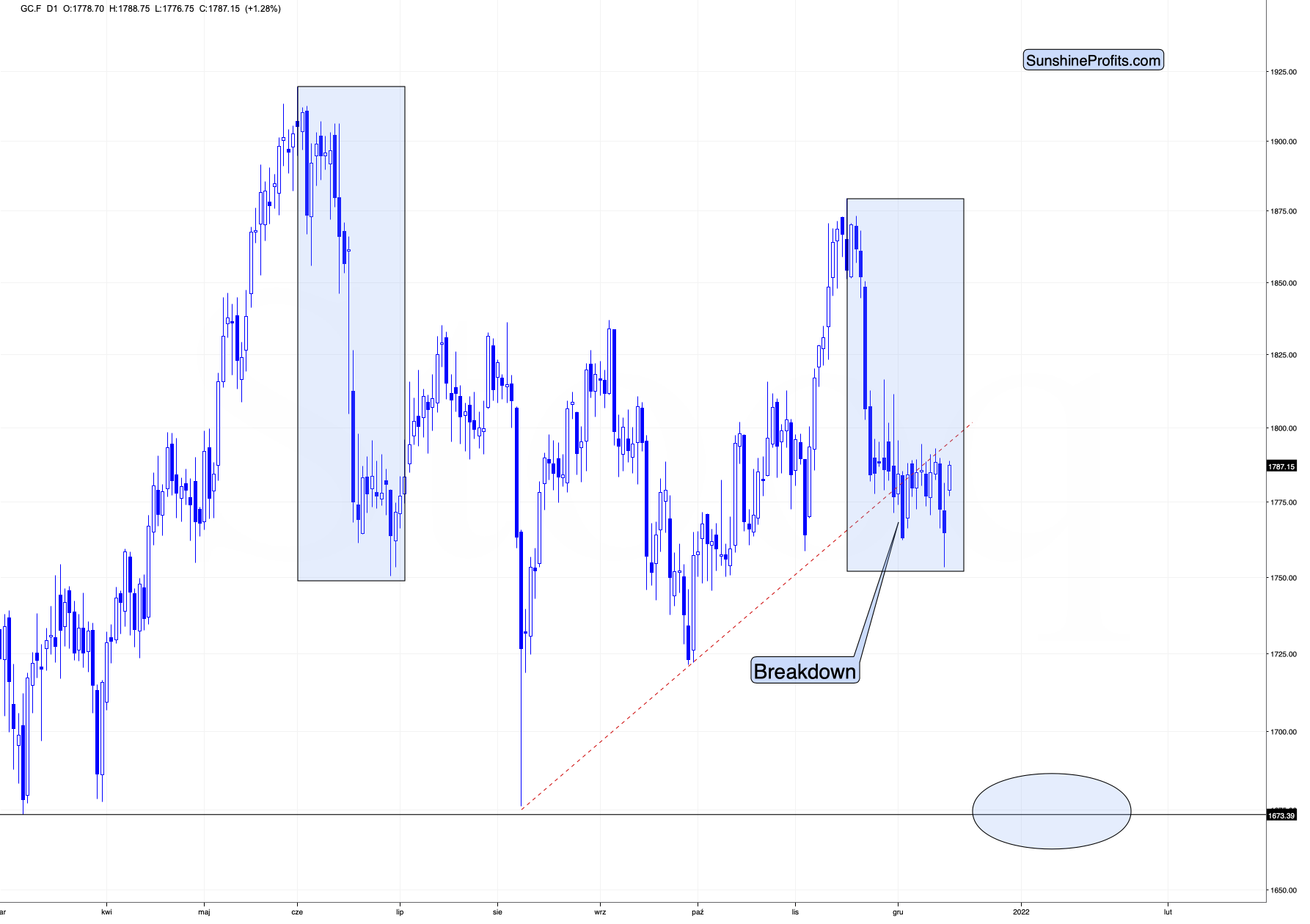Tightening the Screws
While stock market investors orchestrated a ‘sell the rumor, buy the news’ reversal on Dec. 15, the PMs weren’t so lucky. Despite a late-afternoon surge by the S&P 500, gold, silver and mining stocks all ended the day in the red. Moreover, the weakness occurred even as the USD Index declined.
But what helped cause the profound underperformance?
Well, for starters, the Fed fired a hawkish bazooka on Dec. 15. To explain, the FOMC announced that it will increase the pace of its taper from $15 billion per month to $30 billion per month. An excerpt from its monetary policy statement read:
“In light of inflation developments and the further improvement in the labor market, the Committee decided to reduce the monthly pace of its net asset purchases by $20 billion for Treasury securities and $10 billion for agency mortgage-backed securities.”
Moreover, the hawkish crusade didn’t end there. However, to know where we’re going, it’s essential to know where we’ve been. For context, I wrote on Sept. 23:
While I’ve been warning for months that Powell remains materially behind the inflation curve, the FOMC increased its 2021 PCE Index projection from 3.4% YoY to 4.2% YoY and increased its 2022 projection by 10 basis points (0.10%) on Sep. 22. For context, the committee also reduced its 2021 real GDP growth forecast and increased its 2021 U.S. unemployment rate forecast (stagflation anyone?).
Please see below:
Source: U.S. Fed
What’s more, the FOMC’s September ‘dot plot’ has nine FOMC participants signaling at least one rate hike in 2022 and 17 FOMC participants signaling at least one rate hike in 2023.
Please see below:
Source: U.S. Fed
To explain, the vertical scale on the right side of the chart represents the U.S. federal funds rate and the blue dots depict Fed officials’ projections for the rate and when they will likely materialize. If you analyze the arrow near the left side of the chart, you can see that nine members expect the U.S. federal funds rate to range between roughly 0.25% and 0.75% in 2022. In addition, 17 Fed officials expect the U.S. federal funds rate to range between roughly 0.25% and 1.75% in 2023. Thus, surging inflation has the FOMC increasingly hawked up.
And now, with the FOMC releasing its latest Summary of Economic Projections on Dec. 15, officials’ 2021 PCE Index estimate has increased from 4.2% YoY to 5.3% YoY and its 2022 estimate has increased by 40 basis points (0.40%).
Please see below:
Source: U.S. Fed
However, the crucial development was the hawkish change in the FOMC’s dot plot. With all 18 members now expecting at least one rate hike in 2022, the median forecast (10 dots = 10 members) is for three rate hikes in 2022.
Please see below:
Source: U.S. Fed
On top of that, when Chairman Jerome Powell was asked if he postponed his “hawkish policy stance” until after he was reappointed for a second term, he responded:
“We got the labor market report two days after the [November] meeting, and then one week after that, we got the CPI reading.… I just came to the view over that weekend that we needed to speed up the taper and we started working on that. That’s a full 10 days or so before the president made a decision to re-nominate me. So, honestly, it had nothing to do with that at all.”
However, as one of the most important quotes of the press conference, he admitted:
“My colleagues were out talking about a faster taper and that doesn’t happen by accident. They were out talking about a faster taper before the president made his decision. So, it’s a decision that effectively was more than entrained.”
And while Powell sounded a little rattled during the exchange, his slip highlights the importance of Fed officials’ hawkish rhetoric. Essentially, when Clarida, Waller, Bostic, Bullard, etc., are making the hawkish rounds, “that doesn’t happen by accident.” As such, it’s an admission that his understudies serve as messengers for pre-determined policy decisions.
Also noteworthy, Powell admitted that inflationary risks have increased and that the jump in the 2022 PCE Index projection was a “pretty significant move up.” He said:
“There is a real risk now that inflation may be more persistent and that may be putting inflation expectations under pressure, and that the risk of higher inflation becoming entrenched has increased. It’s certainly increased. I don’t think it’s high at this moment. But I think it’s increased and I think that’s part of the reason behind our move today.”
More importantly, though, with boiling inflation colliding with a lukewarm labor market, Powell said that “one of the two big threats to getting back to maximum employment is actually high inflation.”
As a result, the narrative has been flipped upside down. Before, dovish policy was required to help uplift the consumer and heal the U.S. economy. Now, with consumer confidence near a 10-year low, hawkish policy is required to help uplift the consumer and heal the U.S. economy.
Thus, the PMs remain in no man’s land. For context, I warned on Nov. 11 that the Fed would spoil the PMs’ party. And with the GDXJ ETF now approaching its 2021 lows, investors have come around to our way of thinking. I wrote:
With inflation surging, markets rattled, The White House rattled and precious metals investors assuming that policymakers will do nothing (even as their anxiety accelerates), the calculus boils down to one fundamental question: do you believe the U.S. dollar or do you believe the PMs?
Please see below:
To explain, the gold line above tracks the GDXJ ETF (our short position) in 2021, while the green line above tracks the inverted (scale flipped upside down) USD Index. If you analyze the relationship, you can see that when the USD Index rises (the green line falls), the GDXJ ETF often heads in the opposite direction.
However, with the U.S. dollar betting that the Fed will tighten and the junior miners betting that it won’t, we expect the former to win out over the medium term.
The bottom line? When the Fed drops the hawkish hammer, it shakes the PMs’ fundamental foundation. For example, surging inflation led to an upgrade of the FOMC’s PCE Index projection. Then, it led to a taper announcement being pulled forward by several months. Now, it’s led to an accelerated taper and has the majority of FOMC officials signaling three rate hikes in 2022.
And keep in mind: the accelerated taper will have little effect on inflation in the near term. In reality, the liquidity deceleration will take months to filter through the real economy. As a result, more hot CPI prints will likely hit the wire in the coming months and don’t be surprised if Fed officials ramp up the hawkish rhetoric in 2022. Because, as Powell admitted, “that doesn’t happen by accident.”
In conclusion, the PMs declined on Dec. 15, and silver was the daily underperformer. And while the USD Index declined as well, ‘selling the news’ is a game that day traders like to play. Despite that, though, the greenback’s fundamentals are stronger now than at any other point in 2021. And with the FOMC poised to up the hawkish ante over the medium term, a stronger U.S. dollar and rising real interest rates will likely chip away at the PMs’ prices over the next few months.
On the Technical Front
The question is if it was only the USD Index that got ahead of itself in a buy-the-rumor-sell-the-fact manner, or does the same apply to the precious metals market as well.
In my opinion, gold, silver, and miners were affected too, and we have already seen a small corrective upswing. I know that some of you have already taken profits from your short positions in the precious metals sector, but the question remains: what’s next? Are short positions still justified, or not?
Before replying to these questions, let’s take a look at the USD Index.
In short, yesterday’s intraday breakout above the triangle pattern was invalidated and since invalidations are bearish signals, it’s no wonder that it was followed by lower USDX values.
The immediate-term momentum in the USDX is down. But the late-November lows or the red support line that’s very close to them is likely to stop the decline.
Why? Because that’s the closest relatively strong short-term support level. It’s also possible that the USDX would bottom higher. I don’t think that the USD Index would be likely to fall much lower, as the fundamental situation is still bullish for the USDX (there are more monetary hawks in the U.S. then they are in the Eurozone and Japan), and the medium-term trend remains up.
Given how far the USD Index declined from its very recent high, the above means that the USD Index would be likely to decline by not more than it had already declined recently.
Let’s see how gold and mining stocks reacted.
Well, gold moved visibly higher from the recent lows, but:
- It hasn’t invalidated its previous breakdown below the rising red support line
- Even if the size of the very recent rally doubled, gold would not move up that significantly – perhaps to $1,815 or so.
There’s also a risk that gold might rally more visibly because of the similarity to what happened earlier this year. I marked both cases with blue rectangles. After making a second lower bottom, gold rallied and most of the upswing happened in July 2020.
But does the same fate (a visible counter-trend rally) await silver and mining stocks (in particular: junior mining stocks)? It’s not necessarily the case, because while – at the moment of writing these words – gold is already back to its previous December highs, silver is not, and the GDXJ ETF (proxy for junior mining stocks) is has corrected (based on its London trading) mere 23.6% of the December decline.

